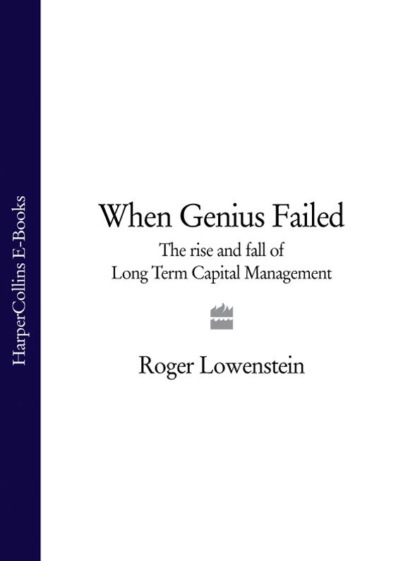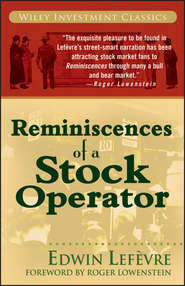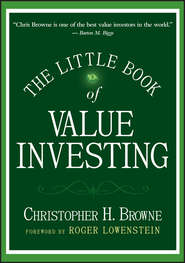По всем вопросам обращайтесь на: info@litportal.ru
(©) 2003-2024.
✖
When Genius Failed: The Rise and Fall of Long Term Capital Management
Автор
Год написания книги
2018
Настройки чтения
Размер шрифта
Высота строк
Поля
Haghani thought the market was seriously overstating the risk of the government’s defaulting—relative to the price it was putting on other risks. With characteristic derring-do, he recommended a king-size arbitrage to exploit the supposed mispricing. It was a calculated gamble, because if Italy did default, Long-Term’s counterparties might walk away from their contracts—and Long-Term could lose its shirt. To the American partners, who remained skeptical about Italy, this was a major worry. The risk-averse Bill Krasker was especially concerned, and the partners heatedly debated Italy for hours.
In simple terms, the arbitrage zeroed in on the market’s utter lack of respect for Rome. But nothing at Long-Term was ever simple. Specifically, Haghani, who eventually prevailed, bought the fixed-rate Italian government bonds and shorted the fixed rate on Italian swaps. He also bought the floating-rate government paper, a coup for Long-Term because few others could get hold of this thinly traded security. Haghani balanced that with a short position, too. At first, Long-Term hedged the entire position, taking out a rather expensive Italian-default insurance policy (it even took out a second policy, in case the insurer went broke).
(#litres_trial_promo) But as the Italian position got bigger, Long-Term couldn’t afford to keep buying more insurance, and it simply took a chance. An insider judged that had Italy gone bust, the fund could have lost half of its capital.
The virtually unregulated hedge fund did not disclose its risk in Italy to investors; indeed, it didn’t tell them anything about how and where their money was invested, save for broad generalities. J.M.’s letters were saturated with statistics on volatilities but mute on what the firm was actually doing. He covered for his shyness by adopting an aloof, impersonal tone, as though he were doing his investors a favor by disclosing anything. “It is our intent to maintain ongoing communications with you, our investors,” he declared stiffly. Even the few dry nuggets that J.M. did disclose he asked investors to keep confidential, as if Long-Term’s genius were a tender woodland plant that couldn’t tolerate the glare of sunlight. The partners went to obsessive lengths to stay out of the press. They even repurchased the rights to photographs that had run in Business Week to keep their pictures from public view.
For all its attention to risk, Long-Term’s management had a serious flaw. Unlike at banks, where independent risk managers watch over traders, Long-Term’s partners monitored themselves. Though this enabled them to sidestep the rigidities of a big organization, there was no one to call the partners to account.
Traders needed approval from the risk-management committee to initiate a trade; however, Hilibrand and Haghani, who would fight relentlessly for what they wanted, had a way of getting it. Sooner or later, the other partners would defer, if only out of sheer exhaustion. Meriwether was largely to blame for this tolerant regime. If J.M. had a cardinal weakness, it was his failure to insert himself into the debates. And there was no one else who could have played the role of nanny, as there had been at Salomon—no Gutfreund. The traders were their own watchdogs.
The partners did go to considerable lengths to research their trades, the Italian trade being a prime example. Haghani recruited a network of intelligence sources to bolster his knowledge of Italy. He hired—first as a consultant, later full-time—Alberto Giovannini, a former official in the Italian Treasury and professor at Columbia University. Giovannini, who had also studied at MIT, would shuttle back and forth between London and Rome, where he could see his family and gossip with Italian officials. Still not satisfied, Haghani brought in Gérard Gennotte, yet another MIT grad, who was the son of Belgium’s ambassador to Italy and was fluent in Italian. “Victor was always keen on Italy,” an associate noted. And of course, Long-Term was plugged in to Italy’s central bank, which had invested $100 million in the fund and lent it $150 million more.
However, Long-Term’s approach was so mathematical, it’s doubtful that all this intelligence made much difference. Its models said simply that Italy was “cheap” relative to historical patterns and anticipated risks. The partners assumed that, all else being equal, the future would look like the past. Therefore, in they went. Moreover, its models were hardly a secret. “You could pick up a Journal of Finance and see where someone was applying models,” a London-based trader at Salomon Brothers noted with respect to the Italy trade. “Anyone who had done first-year math at university could do it.” In truth, traders at other firms had been doing similar trades for years. By the time Long-Term started to trade, spreads in Italy had begun to narrow; rival firms were bidding arrivederci. Haghani got his first billion dollars’ worth or so of Italian bonds from Salomon, which wanted out. The common notion that Long-Term had a unique black box was a myth. Other Wall Street firms had also found their way to MIT, and most of the big banks were employing similar models—and, what’s more, were applying them to the same couple of dozen spreads in bond markets.
Long-Term’s edge wasn’t in its models but, first, in its experience in reading the models. The partners had been doing such trades for years. Second, the firm had better financing. During its first year, Rosenfeld sewed up repo financing with thirty banks and derivative facilities with twenty—all on liberal terms.
(#litres_trial_promo) With financing so accessible—and with the partners so supremely confident—Long-Term traded on a greater scale, and it kept squeezing nickels long after others had quit. “We focused on smaller discrepancies than other people,” one trader said. “We thought we could hedge further and leverage further.”
At least one observer had grave doubts about the fund’s seemingly cavalier approach to debt. Seth Klarman, the general partner of Baupost Group, a collection of smallish hedge funds based in Cambridge, Massachusetts, wrote to his investors that he had been offered a stake in a new fund run by former Salomon bond traders—obviously Long-Term—and had declined. Klarman was perturbed by a seemingly reckless trend on Wall Street. Investment banks possessed of the equivalent of financial Veg-O-Matics were slicing and dicing financial assets into potent, newfangled securities—IOs and POs—that investors were scooping up with reckless élan. What was worse, investors had rediscovered their thirst for leverage. With double-digit bond yields a thing of the past, investors—particularly the new hedge funds that were “popping up all over”—were resorting to borrowing to inflate their returns. How could investors be so certain that markets would always be liquid?, Klarman wondered. He feared that investors were turning “a blind eye to the consequences of ‘Outlier’ events,” such as the sudden disturbances and occasional crashes that, historically, have always upset the best-laid plans of investors. In general, Klarman warned, “Successful investors have positioned themselves to avoid the 100-year flood. Increasingly, that way of thinking has become passé.” Turning to the former Salomon traders’ fund—that is, to Long-Term—Klarman noted that, given its projected leverage, even a single serious mistake would put a “major dent” in the fund’s capital. “Two major errors at the same time, of course, would be catastrophic.”
(#litres_trial_promo)
* (#ulink_6a42db61-beca-5b37-b95c-c570d5c1d461) Maintaining the position wasn’t completely cost-free. Though a simple trade, it actually entailed four different payment streams. Long-Term collected interest on the collateral it paid out and paid interest (at a slightly higher rate) on the collateral it took in. It made some of this deficit back because it collected the 7.36 percent coupon on the bond it owned and paid the lesser 7.24 percent rate on the bond it shorted. Overall, it cost Long-Term a few basis points a month.
Вы ознакомились с фрагментом книги.
Приобретайте полный текст книги у нашего партнера:
Приобретайте полный текст книги у нашего партнера:







